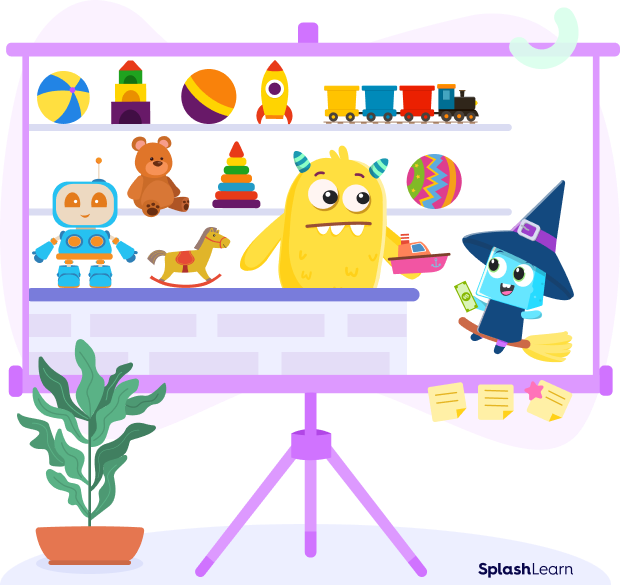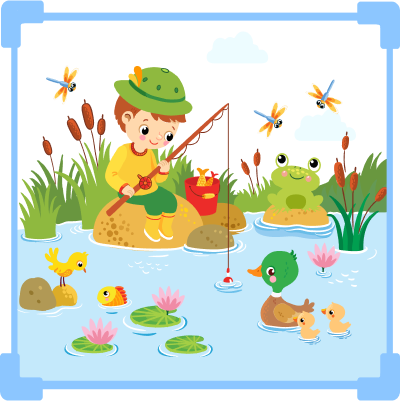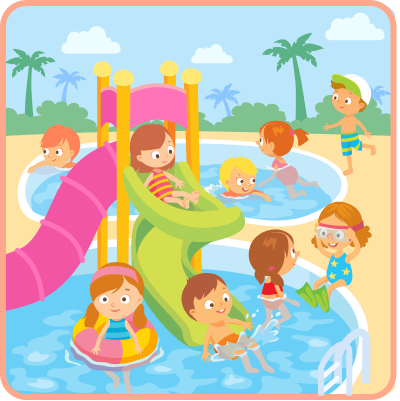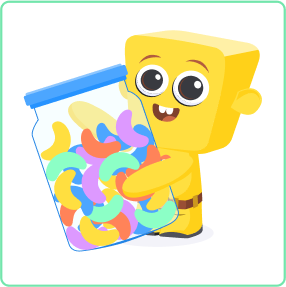We frequently use numbers in our daily life. But doing calculations can get rather complex at times. Learning how to round a whole number helps us to make estimations and calculations quickly.

What is Rounding to the Nearest Whole Number?
Suppose you want to buy a toy that costs $\$$48. Imagine that this is during a flash sale, and you don’t have the exact change. In such a scenario, you can pay $50 and get $\$$2 back. Here, we rounded off the number 48 to the nearest multiple of 10 to make our problem easier. This is called rounding. We can round a whole number to the nearest multiple of 10 to make our calculations easier.
 Begin here
Begin here
What Are Multiples of 10?
Multiples of 10 are the numbers that are exactly divisible by 10 and leave behind no remainder. We can also say that a multiple of 10 is any number multiplied by 10 or simply any number that has a 0 at the ones place.
For example, 30, 40, 100, 250, and 60 are all multiples of 10.
Related Worksheets
How to round to the nearest whole number
We can follow these step-by-step processes for rounding to the nearest whole number:
Round to the Nearest Ten
Step 1: We identify the previous and next multiple of 10 for the given number.
Step 2: We identify the rounding digit. The rounding digit is the digit at the same place to which we are doing the rounding off. When rounding to the nearest multiple of ten, the digit at the tens place in the given number is the rounding digit.
Step 3: If the digit to the right of the rounding digit is less than 5, we round down to the previous multiple of 10. If the digit to the right of the rounding digit is greater than or equal to 5, we round up to the next multiple of 10.
Example: Let’s round a whole number, 48 to the nearest ten.
Step 1: Identify the previous and next multiple of 10. 48 lies between 40 and 50. So,
Previous multiple of $10 = 40$.
Next multiple of $10 = 50$.
Step 2: We identify the rounding digit. When rounding to the nearest multiple of ten, the digit at the tens place in the given number is the rounding digit. 48 has 4 in the tens place so,
Rounding digit $= 4$.
Step 3: Look at the digit that is immediately next to the rounding digit. Here, in 48, it is 8. And 8 is greater than 5, so we will round up. Therefore, 48 rounds to its next multiple of 10, which is 50.
We write this as 48 ~ 50. Where the “~” symbol denotes rounding or approximation.
We follow a similar process while rounding a number to the nearest hundred or thousands.
For example, let’s round off 5432 to the nearest hundreds and thousand.
Rounding to the nearest hundred:
Step 1: Identify the previous and next multiple of 100 for the given number.
For 5432, the previous multiple of 100 is 5400 and the next multiple of 100 is 5500.
Step 2: Identify the rounding digit.
Since we are rounding off to the nearest hundred, the rounding digit will be the digit in the hundreds place. In the case of 5432, the digit in the hundreds place is 4.
Step 3: If the digit to the right of the rounding digit is less than 5, we round down to the previous multiple of 10. If the digit to the right of the rounding digit is greater than or equal to 5, we round up to the next multiple.
For 5432, the rounding digit is 4 and the digit to its immediate right is 3. Since 3 is less than 5, we will round down. Therefore, 5432 rounded off to the nearest hundred is 5400.
Rounding to the nearest thousand:
Step 1: Identify the previous and next multiple of 1000 for the given number.
For 5432, the previous multiple of 1000 is 5000 and the next multiple of 100 is 6000.
Step 2: Identify the rounding digit.
Since we are rounding off to the nearest thousand, the rounding digit will be the digit in the thousands place. In the case of 5432, the digit in the thousands place is 5.
Step 3: If the digit to the right of the rounding digit is less than 5, we round down to the previous multiple of 10. If the digit to the right of the rounding digit is greater than or equal to 5, we round up to the next multiple.
For 5432, the rounding digit is 5 and the digit to its immediate right is 4. Since 4 is less than 5 so we will round down. Therefore, 5432 rounded off to the nearest thousand is 5000.
Solved Examples
Example 1: There are 876 fish in a pond. Round the number of fish to the nearest ten.

Solution:
Step 1: We have to round a whole number to the nearest ten. To round 876 to the nearest ten, we identify the previous and next multiple of 10 for 876. The previous multiple of 10 is 870, and the next multiple of 10 is 880.
Step 2: We identify the rounding digit, which is 7 here.
Step 3: We observe that the digit to the right of 7 is 6. Since 6 is greater than 5, we round up to the next multiple of 10.
So, 876 rounded to the nearest ten is 880.
Example 2: The area of a swimming pool is 1206 square feet. Round off the area to the nearest hundred.

Solution:
Step 1: We have to round a whole number (1206) to the nearest hundred. The previous multiple of 100 for 1206 is 1200, and the next multiple of 100 is 1300.
Step 2: We identify the rounding digit, which is 2 here.
Step 3: We observe that the digit to the right of 2 is 0. Since 0 is less than 5, we round down to the previous multiple of 100.
So, 1206 rounded to the nearest hundred is 1200.
Example 3: There are 136 jellybeans in a jar; round this number to the nearest ten.

Solution:
Step 1: We have to round 136 to the nearest ten. The previous multiple of 10 for 136 is 130, and the next multiple of 10 is 140.
Step 2: We identify the rounding digit, which is 3 here.
Step 3: We observe that the digit to the right of 3 is 6. Since 6 is greater than 5, we round up to the next multiple of 10.
So, 136 rounded to the nearest ten is 140.
Practice Problems
Rounding to the Nearest Whole Number - Definition With Examples
Dora bought books and copies for $\$$172. What is the amount she spent rounded to the nearest hundred?
Here, the previous multiple of 100 for 172 is 100, and the next multiple of 100 is 200.
The rounding digit is 1. The digit to the right of 1 is 7. Since 7 is greater than 5, we round up to the next multiple of 100.
So, 172 rounded to the nearest hundred is 200.
What will you get if you round 769 to the nearest ten?
Here, the previous multiple of 10 for 769 is 760, and the next multiple of 10 is 770. The rounding digit is 6. The digit to the right of 6 is 9. Since 9 is greater than 5, we round up to the next multiple of 10.
So, 769 rounded to the nearest ten is 770.
Last month, a bakery sold 2978 cakes. What will be the number of cakes they baked when rounded to the nearest thousand?
Here, the previous multiple of 1000 for 2978 is 2000, and the next multiple of 1000 is 3000. The rounding digit is 2. The digit to the right of 2 is 9. Since 9 is greater than 5, we round up to the next multiple of 1000.
So, 2978 rounded to the nearest thousand is 3000.
Frequently Asked Questions
Can we use the method to round off larger whole numbers?
Yes, we can use the same method to round off larger whole numbers, such as ten thousand, million, etc.
When we round a whole number, is the answer always an even number?
Yes, when we round a whole number, the answer is always an even number. This is because when rounding off, we consider multiples of 10, and they are always even.
What is the first multiple of 10?
The first multiple of 10 is 10. It is also the smallest multiple of 10.





















